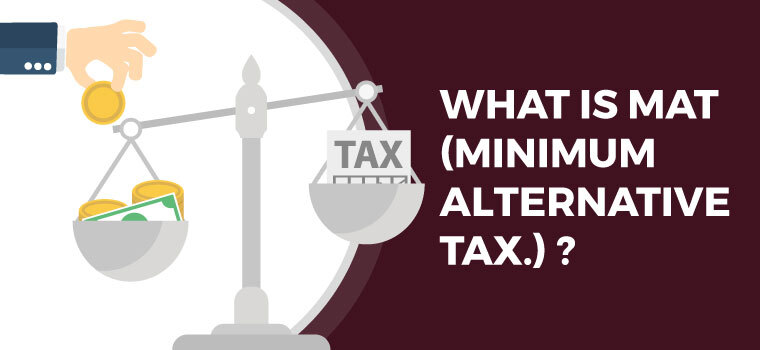Blog Post

by Pawan
Posted on November 11, 2020

For the purpose of Income Tax, Companies have been divided into –
1) Domestic companies
2) Foreign companies
Different tax rates, cess, surcharge are applicable on the basis of the above status. Let us first understand how to differentiate domestic and foreign companies: –
As per section 2(22A), a domestic company means an Indian company or the other companies that are liable to tax under the income tax act.
The Indian company is the company that is registered in India under the Companies Act, 2013, or under any previous company law. Domestic companies pay tax on their universal income.
As per section 2 (23A), foreign companies means a company that is not a domestic company or which is registered outside India in any other foreign country.
Foreign companies pay the tax only on the income earned within India.
Computation Taxable income of a company:
➢ First of all, calculate the total income of a company by aggregating income under the following four heads:
1) Income from house property, whether residential or commercial, let-out or self-occupied.
2) Profit and gains of business or profession
3) Capital Gain
4) Income from other sources
➢ The total income obtained then adjusted the ‘current and brought forward losses’ for set off in subsequent assessment years to arrive at the gross total income.
➢ From the gross total income, deduct the ‘deductions’ under the income tax Act to derive the net income.
➢ On net income compute the tax liability for using a rate of tax which is given as under.
Income tax rate for Indian (Domestic) companies [FY 2019-20, AY 2020-21]:
If companies Gross turnover more than Rs.400 crore in the FY 2017-18:
Rate of tax would be @30% + 4% Cess + surcharge as under total income above Rs.1 crore up to Rs.10 crore the surcharge rate is 7% of income tax. If total income above Rs.10 crore the surcharge rate is 12% of income tax.
If companies’ Gross turnover up to Rs.400 crore in the FY 2017-18:
Rate of tax @25% + 4% Cess + surcharge as above
Note: The domestic companies can choose the following scheme:
➢ Sec 115BAA(Domestic companies) – tax rate @22%+ 4% Cess + 10% surcharge
➢ Sec 115BAB (manufacturing companies)-tax rate @15%+ 4% Cess +10% surcharge
In both cases companies can’t claim certain exemption, deduction and provision of MAT. which are as follows:
Income tax rate for foreign Companies:
If any royalty received from government or technical fees as per agreement approved by central Government then tax rate would be @50% + 4% Cess + surcharge as under total income above Rs.1 crore up to Rs.10 crore the surcharge rate is 2% of income tax. If total income above Rs.10 crore the surcharge rate is 5% of income tax.
Any other income:
Tax rate would be @40% +4% Cess +Surcharge as above

MAT stands for Minimum Alternative Tax. Many times It may happen that a taxpayer, being a company, may have generated income during the year, but by taking advantage of various provisions of Income-tax Law (like exemptions, deductions, depreciation, etc.), it may not have paid any tax at all. Due to an increase in the number of zero tax-paying companies, MAT was reintroduced by the Finance Act, 1996, wef 1-4-1997.
MAT Applicable for Assessment Year 2020-21:
As per section 115JB, The tax liability of a company will be higher of the following:
a) Tax computed on the taxable income of the company by applying the tax rate applicable to the company. Such tax is known as normal tax liability.
Or
b) Tax computed by applying 15% (plus cess and surcharge as applicable) on book profit. Example:
The normal tax liability of XYZ Ltd is Rs.1, 00,000 and as per section 115JB computed on book profit MAT is Rs.1,50,000. Then the tax liability of XYZ Ltd will be Rs.1,50,000 being higher than the normal tax liability.
In the case taxpayer being a company is pay tax as par MAT in the first year and subsequent years. If taxpayers pay tax as par normal tax liability which is higher the MAT. In case taxpayer can claim MAT credit (MAT in first year – normal tax liability) to pay a normal tax liability.
MAT Applicable For Foreign Companies:
A foreign company shall be liable to pay MAT @18.5% (plus cess and surcharge as applicable) of book profit, where the normal tax liability of the company is less than 18.5%of book profit.
Note: A foreign company shall not be pay MAT on following incomes , if the tax payable thereon under the normal provision is at a rate less than 18.5%:

Block Credit Under GST

GST Audit/Reconciliation and Certification (Form GSTR-9C)

Impact of GST on BPO and KPO sector

GSTR 9C – Part II

Structured Digital Database (SDD) under Prohibition of Insider Trading Regulations, 2015
The Collapse of Silicon Valley Bank Explained

Ignite Your Startup: Unlocking Success for Startups!!!

Cryptocurrency and it’s taxability under GST
Hi there, I discovered your web site by means of Google even as searching for a similar subject,
your site got here up, it appears good. I’ve bookmarked it in my
google bookmarks.
Hello there, just become aware of your blog thru Google, and found that it’s really informative.
I’m going to watch out for brussels. I’ll appreciate if you proceed this in future.
Many other people shall be benefited out of your writing.
Cheers!
P.S. If you have a minute, would love your feedback on my new website
re-design. You can find it by searching for «royal
cbd» — no sweat if you can’t.
Keep up the good work!